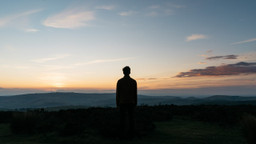
Noise pollution and its impact on human health
We, humans, make a lot of noise, and that noise takes a toll on us, as well as on the world around us. In order to create cities and other human environments that are safe, secure and happy places to live, we need to think more about noise pollution and its impact on human and ecosystem health.
This article focuses on the impact of noise pollution on human health – looking at how the noise we generate impacts us in psychological and physiological ways. The impact on humans is certainly not the only problem, but we will cover the impacts on plants and animals around us, looking at the impact of noise pollution within the broader ecosystems around us, in a separate article.
What do we mean by noise pollution?
First things first, let’s take a look at what we mean by noise pollution. Human made sound is typically referred to as anthropophony. This includes both intentional sound, such as vocalisations, speech and music, and uncontrolled sound.
Both controlled and uncontrolled sound can become noise pollution when they have ranging impacts on human or animal life that are harmful. Just like other forms of pollution, noise pollution is a negative consequence of human activity and can harm our own health in different ways.
Sources of noise pollution
Primary sources of noise pollution are machinery, traffic and transport, and industrial processes. Especially in urban areas, the noises from roads, railways, factories, garden care, construction… Even loud voices or loud music can create an immense and constant cacophony.

The sounds around us have altered, often dramatically, the natural music of the landscapes and ecosystems around us, and changed our world in extremely profound ways.
How big a problem is noise pollution?
The impact of noise pollution on human health is of urgent and immediate concern in today’s world. It has long been considered as a leading environmental nuisance in the World Health Organisation (WHO) European Region, as well as in other regions around the world.
The WHO guidelines for community noise recommend less than 30 A-weighted decibels (dB(A)) in bedrooms during the night for a sleep of good quality and less than 35 dB(A) in classrooms to allow good teaching and learning conditions.
The WHO guidelines for night noise (2009) recommended less than 40 dB(A) of annual average (Lnight) outside of bedrooms to prevent adverse health effects from night noise.
But according to figures in an EU report:
- about 40% of the population in EU countries is exposed to road traffic noise at levels exceeding 55 db(A)
- 20% is exposed to levels exceeding 65 dB(A) during the daytime
- more than 30% is exposed to levels exceeding 55 dB(A) at night
In 2018, WHO Environmental Noise Guidelines for the European Region provide strong evidence that noise is one of the top environmental hazards to both physical and mental health and well-being in the European region.
Based on science, the new guidelines recommend even more stringent measures, including these for road traffic:
- For average noise exposure, reducing noise levels produced by road traffic below 53 dB Lden, as road traffic noise above this level is associated with adverse health effects.
- For night noise exposure, the GDG recommends reducing noise levels produced by road traffic during night time below 45 dB Lnight, as road traffic noise above this level is associated with adverse effects on sleep.
- To reduce health effects, the GDG recommends that policy-makers implement suitable measures to reduce noise exposure from road traffic in the population exposed to levels above the guideline values for average and night noise exposure. For specific interventions, reducing noise both at the source and on the route between the source and the affected population by changes in infrastructure is recommended.
Similar recommendations were also made for other key sources of noise pollution.

A large body of the evidence underpinning the recommendations was derived not only from European noise effect studies but also from research in other parts of the world – mainly in America, Asia and Australia.
Yet people are increasingly exposed to noise above these levels, in the European region and around the world, as global population rises and cities continue to grow.
Surveys have consistently revealed that noise is an issue for many European citizens, and respondents frequently reported that they believed noise had affected their health to some degree.
In 2020, it was reported that one in five Europeans are exposed to harmful levels of noise pollution, and this number is set to rise in the next decade, with road traffic the biggest culprit.
In the UK, more than 18% of the urban population were estimated to be exposed to harmful noise levels, and according to the European Environment Agency, around 12,000 premature deaths are caused by noise pollution in Europe each year.
The impact of noise pollution on human health
Delving deeper into the impact of noise pollution on human health, it soon becomes clear that noise levels can negatively impact our health in many ways.
Studies into environmental risk burden in Europe have identified the annual burden of disease associated with different environmental risk factors: traffic noise (including road, rail, and air traffic noise) was found to add to the burden of disease by 600-1200 Disability-adjusted life years (DALYs) per million people.
Impacts of noise pollution on mental health
One thing that has long been clear is that prolonged exposure to noise pollution can significantly impact mental health. Mental and physical health are interconnected in complex ways, and mental disturbances, from annoyance to stress and sleep disturbance, play on in living and working environments.
Noise has a profound impact on how we perceive our environments, on our mood and state of mind. Studies have shown that people feel a generalised sense of unease and discomfort due to noise levels, and this can impact mental health and general well-being.
Noise pollution can impact mental health in less obvious ways. When we are surrounded by man-made sounds, this lessens our sense of connection to the natural world. And feeling a strong connection to the natural world is something scientists increasingly understand as being crucial for our mental well-being.
In 2017, for the first time, a health survey investigated the spatial distributions of multiple noise pollution perceived by residents in Beijing, including road traffic noise, railway (or subway) noise, commercial noise, and housing renovation (or construction) noise. The results show that perceived higher noise-pollution exposure is significantly associated with worse mental health.
A 2019 study assessed stress in street vendors exposed to noise pollution by monitoring daily variations in cortisol levels, showing the impacts on both perceived stress and physiological changes of environmental noise pollution.
Physiological effects of noise pollution
Scientists have shown that noise is pervasive in everyday life and can cause both auditory and non-auditory health effects. The reviews explain that noise exposure leads to annoyance, disturbs sleep, and causes daytime sleepiness. It affects patient outcomes and staff performance in hospitals, increases the occurrence of hypertension and cardiovascular disease, and impairs cognitive performance in schoolchildren.
Auditory health effects
The auditory effects of noise pollution exposure are perhaps the most obvious and easily understood. When we are constantly exposed to sounds louder and more persistent than the human ear is able to withstand, this can cause issues with hearing difficulty, damaging the structure of the ear and auditory processes.
A 2018 study aimed to estimate the prevalence of occupational noise exposure, hearing difficulty and cardiovascular conditions within US industries and occupations, and to examine any associations of these outcomes with occupational noise exposure. Twenty-five percent of current workers in the study had a history of occupational noise exposure (14% exposed in the last year), 12% had hearing difficulty, and 58% of these cases could be attributed to occupational noise exposure.
Cognitive impairment and cognitive decline
The influence of noise on human cognitive performance and brain activity has been often neglected, but new evidence shows that our brains simply don’t work as well when we are exposed to noise pollution.
In a study into the ‘Effect of Noise Exposure on Cognitive Performance and Brain Activity Patterns‘, mental workload and attention were evaluated under different levels of noise exposure including, background noise, 75, 85 and 95 dBA noise levels. Results revealed that mental workload and visual/auditory attention is significantly reduced when the participants are exposed to noise at 95 dBA level.

Studies show that noise causes cognitive impairment and oxidative stress in the brain. And noise pollution has become a risk factor for depression, cognitive impairment and neurodegenerative disorders.
Recently, increasing animal and clinical evidence has shown that chronic noise exposure has obvious effects on cognitive impairment, such as declined memory and learning. For example, working memory was impaired after chronic noise stress in rats with reduced dentritic count in the hippocampus and prefrontal cortex. And noise exposure during pregnancy impaired spatial learning ability and decreased neurogenesis in the hippocampus in rat pups.
Hypertension and cardiovascular disease
Amongst the worrying health impacts of noise pollution are the impacts on the heart and cardiovascular system.
Studies have found that environmental noise is associated with an increased incidence of arterial hypertension, myocardial infarction, heart failure, and stroke. Observational and translational studies indicate that especially nighttime noise increases levels of stress hormones and vascular oxidative stress, which may lead to endothelial dysfunction and arterial hypertension.
Novel experimental studies found aircraft noise to be associated with oxidative stress–induced vascular damage, mediated by activation of the NADPH oxidase, uncoupling of endothelial nitric oxide synthase, and vascular infiltration with inflammatory cells. Transcriptome analysis of aortic tissues from animals exposed to aircraft noise revealed changes in the expression of genes responsible for the regulation of vascular function, vascular remodeling, and cell death.
Scientists have studied the relationship between the long-term residential exposure to traffic and prevalence of coronary heart disease (CHD), and have revealed epidemiological evidence that the long-term exposure to traffic-related emissions may be an important risk factor for this disease.
Moreover, studies have have showed that exposure to environmental noise is associated with a higher risk of preeclampsia, a hypertensive disorder of pregnancy, in expectant mothers.
Impact of noise pollution on children
Evidence shows that in addition to hearing loss, noise exposure is associated with negative birth outcomes, reduced cognitive function, inability to concentrate, increased psychosocial activation, nervousness, feeling of helplessness, and increased blood pressure in children.

Exposure to excessive noise and vibration during pregnancy may result in high frequency hearing loss in the newborn, and may be associated with prematurity and growth retardation, although the scientific evidence remains inconclusive.
However, as stated in this United States Environmental Protection Agency report, noise can pose a serious threat to a child’s physical and psychological health. It can interfere with speech and language, delaying learning and the acquisition of skills, impair learning by reducing the capacity to concentrate, impair or damage hearing, disturb the cardiovascular system, and disrupt sleep with other knock-on effects.
Children, at different stages of growth, may be even more vulnerable than adults to the various negative health impacts of noise pollution, and may have a lot less agency and be less able to remove themselves from the sources of potential problems.
Reducing noise pollution
It is clear that noise pollution is a major problem for human health, and is a crucial public health issue. Over time, as cities and our global population grow, noise pollution is only set to worsen. It’s becoming clear that in order to reduce strain on human health systems – often strained to breaking point – we need to address sources of noise pollution and to take steps to reduce the noise we generate.
One thing that we must do is identify the sources of noise pollution in a given area and then take steps to either eliminate or, at least, reduce it (rules to reduced road traffic, for instance), or implement strategies to ‘quiet’ the sources of pollution (less noisy automobiles, for instance).
Just as reducing emissions must always be the first step in tackling air pollution, reducing noise should be the first step in tackling noise pollution.
Mitigating the impacts of noise pollution
It is important to remember that we will not be able, realistically, to eliminate all sources of persistent noise pollution over night. Our complex modern world, as we all know, is like a juggernaut or massive tanker and cannot ‘turn on a dime’.
But that is not to say that we cannot mitigate the impacts of the noise pollution that we cannot eliminate right away.
Strategies for the mitigation of the impacts of noise pollution on human health can include:
- Sustainable city planning and systems design
- Re-greening and natural acoustic screening
- Effective sound insulation in buildings
- Acoustic technology to reduce noise level
- Recorded soundscapes for healthy auditory environments
Sustainable city planning and systems design
The first phase in mitigating the impact of noise pollution on human health lies in careful consideration of how and where we live.
Noise pollution is at its worst in built-up, urban areas, and so sustainable city planning and holistic systems design within our built environments are key to ensuring a long-term, healthy future for city dwellers.
City planning involves the basics of clear zoning, with noisy industrial areas and busy traffic corridors located as far as possible from the main areas of human habitation. Moreover, we also need to think about how a sustainable city design can influence and dictate the way we live, and help us to avoid creating noise pollution in the first place. For instance, creating walkable cities by prioritizing bicycles and pedestrians is a good start.
And we need to think about how, through the ways in which we lay out and construct our built environments, we can limit the transmission of noise through our streets and into our homes. By understanding the acoustic properties of the materials we choose, and how sound travels through a built environment, we can develop holistic designs that keep the impacts of noise pollution on human health in mind.
Re-greening and natural acoustic screening
One thing that it is very important to keep in mind as we think about creating the cities of the future, and improve existing cities to keep their inhabitants healthy, is that it is not only the built environment that contributes to the acoustic properties and soundscape of an area.
In sustainable design systems like permaculture, noise pollution is understood, and considered within design as a ‘sector’ acting on a particular site. The way we design our parks, neighbourhoods, streets and private gardens can have a huge impact on limiting the impact of noise pollution on us, and the people around us.
It is very important to recognise how trees and other plants can not only help in cleaning the air and reducing other sources of pollution, but can also serve as acoustic screening, to mitigate the impact of noise pollution in a local area.

Reviews have shown that the presence of trees along the streets, and the integration of vegetation in green walls, building facades and roofs increase the sound absorption, reducing the level of noise and the consequent annoyance. Furthermore, greenery elements present the advantage of landscape visual quality that physiologically affect acoustic perception, increasing the pleasantness and decreasing the annoyance impression.
Plants themselves act to reduce sound transmission, and the use of substrates in urban gardens on roofs or against walls also increases sound absorption. So creating fewer hard paved and solid surfaces, and more green spaces, can aid in mitigating noise pollution in cities and create a healthier living environment.
Re-greening urban environments and creating natural acoustic screening is therefore an important strategy in reducing the impacts of noise pollution within living environments, and creating better health outcomes for those who live in urban areas.
Effective sound insulation in buildings
Moving in from the big picture, in today’s urban areas it’s also essential to think about the design of homes and other buildings, and how the right designs and materials choices can limit the transmission of noise pollution and mitigate human health risk.
When designing buildings, a certain level of acoustic control is typically mandated, but good design can go beyond the basics and carefully consider how the layout, dimensions and materials used impact the acoustic environment within a space, and how noise pollution transmission (both within the structure and from outside) can be reduced or even eliminated altogether.
Effective sound insulation in buildings typically involves thinking about how to reduce acoustic transmission as sound waves by decoupling a structure, and adding sound absorbing materials. When the design takes these things into account, the environment within can become a much more comfortable and healthy space for humans to live or work in.
Acoustic technology to reduce noise level
Another part of the picture involves looking not at the places we live in, but rather at the sources of noise pollution, and finding ways to reduce the volume of the noise generated in the first place.
Acoustic technology and innovative solutions can be used to, for example, make cars and other vehicles quieter, or to allow industrial processes to take place at lower decibels.
Embracing innovation and, where noise pollution is most extreme, prioritising research and technological advancement is another way that we can begin to reduce noise pollution’s impact on human health.
Recorded soundscapes for healthy auditory environments
While it will do nothing to overcome the underlying issue of noise pollution, another interesting area for consideration is the installation of recorded soundscapes within a human environment.
Some evidence suggests that recorded natural soundscapes piped into a living or working environment in a city can help people feel calmer and more relaxed.

Soundscape composition is a fascinating field, showing the impacts of altering the soundscape in human environments to enable the auditory environment to better meet human needs and to instil in the listener a certain feeling and series of complex associations.
Many of us crave natural sounds around us, and this need must be taken into account when creating and maintaining soundscapes in human environments. And where natural sounds cannot immediately be reintroduced through natural re-greening measures, recordings might be considered to create healthy auditory environments.
Noise pollution is a complex issue that we cannot tackle overnight. However, its impact on human health shows that this is an issue we can no longer ignore. We must identify sources of noise pollution, and do all we can to make sure that we all live and work in healthier auditory environments.
Earth.fm is a completely free streaming service of 1000+ nature sounds from around the world, offering natural soundscapes and guided meditations for people who wish to listen to nature, relax, and become more connected. Launched in 2022, Earth.fm is a non-profit and a 1% for the Planet Environmental Partner.
Check out our recordings of nature ambience from sound recordists and artists spanning the globe, our thematic playlists of immersive soundscapes and our Wind Is the Original Radio podcast.
You can join the Earth.fm family by signing up for our newsletter of weekly inspiration for your precious ears, or become a member to enjoy the extra Earth.fm features and goodies and support us on our mission.
Subscription fees contribute to growing our library of authentic nature sounds, research into topics like noise pollution and the connection between nature and mental wellbeing, as well as funding grants that support emerging nature sound recordists from underprivileged communities.
